French Grunt
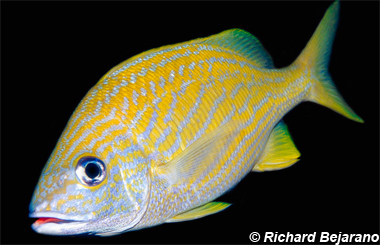
Haemulon flavolineatum
These almond-shaped schooling reef fish are silvery white with vibrant yellow stripes running along their bodies, and have been seen in groups of several thousand. They can grow to be almost 12 inches long, but are usually found around half that length. Their name ‘grunt’ comes from the noise they make by grinding their teeth together.
Order: Perciformes
Family: Haemulidae
Genus: Haemulon
Species: flavolineatum
Common Names
English language common names include French grunt, banana grunt, gold laced grunt, open-mouthed grunt, redmouth grunt, and yellow grunt. Other common names include biquara (Portuguese), bocayate de piedra (Spanish), boquinegro (Spanish), cambuba (Portuguese), capiúma (Portuguese), casaca (Portuguese), condenado (Spanish), corcoroca (Portuguese), corocoro armarillo (Spanish), coroncoro (Spanish), corrocona (Wayu), crocro gueule-rouge (French), Fransk gryntefisk (Danish), gelber grunzerfisch (German), goibi (Portugese), gorette (French), gorette jaune (French), hemulon ronko (Portuguese), korkó (Papiamento), robèki (Papiamento), ronco (Spanish), ronco amarillo (Spanish), ronco condenado (Spanish), roodbekje (Dutch), and rooibekkie (Papiamento).
Importance to Humans
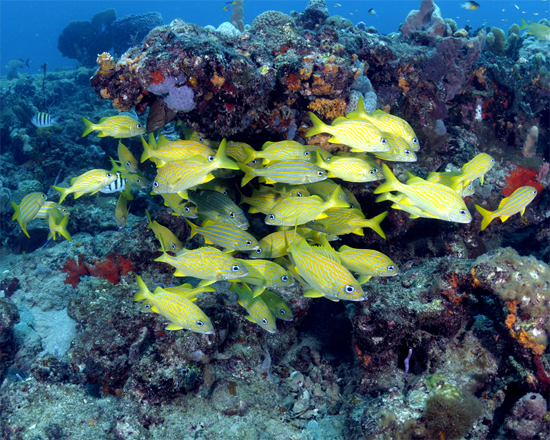
Although considered too small to be of commercial value, the French grunt is an excellent panfish. This grunt is caught with traps and seines throughout its range and is marketed fresh. It is also a common display fish in public aquariums.
Conservation Status
The IUCN is a global union of states, governmental agencies, and non-governmental organizations in a partnership that assesses the conservation status of species.
> Check the status of the French grunt at the IUCN website.
Geographical Distribution

The French grunt is found in the western Atlantic Ocean off Bermuda, South Carolina, and the northern Gulf of Mexico to Brazil including the coasts of Central America and throughout the West Indies.
Habitat
This grunt occurs in large schools, that can number in the thousands, over rocky substrate, coral reefs, under ledges or close to elkhorn coral. Depths range from shallow water to 197 feet (60m). Juveniles often are abundant in the protection of seagrass beds in bays, lagoons, and other coastal waters.
Biology
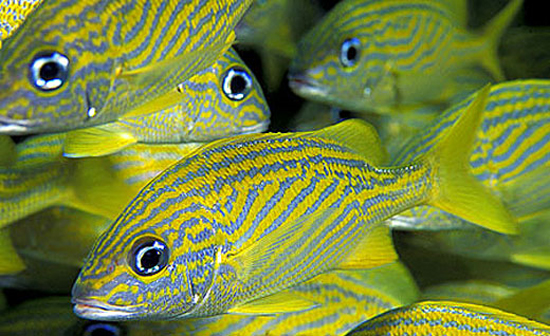
Distinctive Features
The French grunt is oblong in shape with a compressed body and a blunt head. The mouth is small to moderate in size, often with thick lips. The pectoral fins are moderately long. The pelvic fins are located below the base of the pectoral fins. It is the only grunt that has enlarged scales below the lateral line.
Coloration
This species is white to bluish or yellowish with bright yellow to orange stripes, the first three of which are straight. The remaining stripes are set below the lateral line in a diagonal arrangement. Yellow spots are present on the bottom of the head. The inside of the mouth is red. The fins are yellow in color. The ventral surface of this fish is creamy to white.
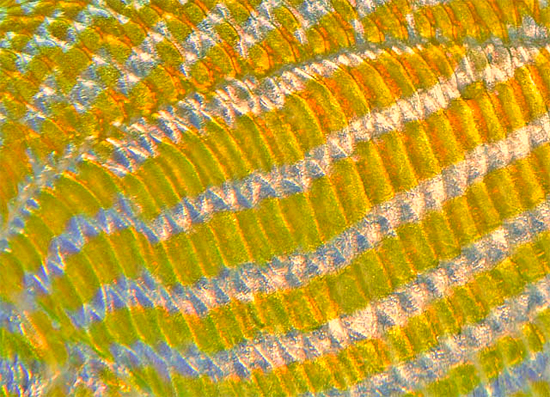
Dentition
The teeth, arranged in a narrow band in each jaw, are conical in shape with an enlarged outer series but lacking canines. There are no teeth on the roof of the mouth.
Size, Age, and Growth
The maximum reported length of the French grunt is 11.8 inches (30.0 cm) total length (TL) although it is more commonly observed at lengths of 6.7 inches (17.0 cm) TL. Reproductive maturity is reached at lengths of 6.3 inches (16.0 cm) as documented in female specimens.
Food Habits
The French grunt feeds primarily on small crustaceans, polychaetes, and mollusks. It is a nocturnal species, scavenging the sand flats and seagrass beds in close proximity to coral reefs during the night.
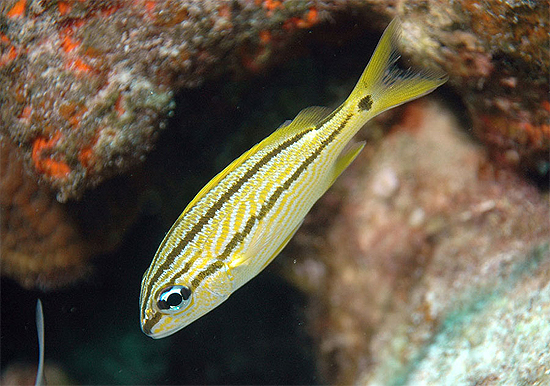
Reproduction
Little information is available on the reproduction of this species. However, it is known that the eggs are pelagic and the larval stage lasts approximately 15 days.
Predators
Documented predators of the French grunt include larger reef fish including the trumpetfish (Aulostomus maculatus), black grouper (Mycteroperca bonaci), tiger grouper (Mycteroperca tigris), yellowfin grouper (Mycteroperca venenosa), and Nassau grouper (Epinephelus striatus).
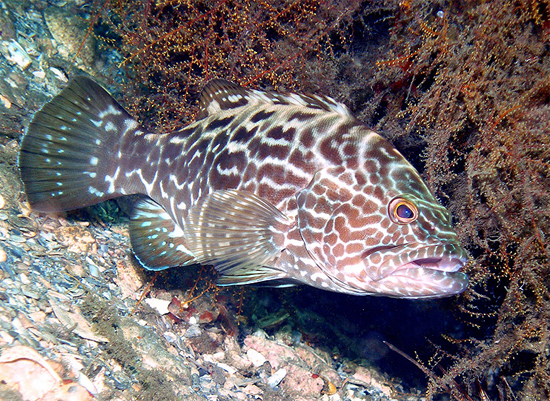
Parasites
There have been many documented parasites of the French grunt including the following digenetic trematodes: Apocreadium foliatum, Apopodocotyle oscitans, Brachyphallus parvus, Derogenes crassus,Diplangus paxillus, Genolopa ampullaceal, Homalometron dowgialloi, Infundibulostomum spinatum,Leurodera decora, Postmonorchis orthopristis, Proctotrema parvum, Proctotrema truncatum,Pseudoplagioporus brevivitelus, and Stephanostomum sentum.
Taxonomy
The French grunt was originally described as Diabasis flavolineatum by Desmarest in 1823. The name was later changed to the currently valid scientific name of Haemulon flavolineatum (Desmarest 1823). The common name of grunt originates from the ability of fish within this family to produce sound by grinding their teeth.
Prepared by: Cathleen Bester